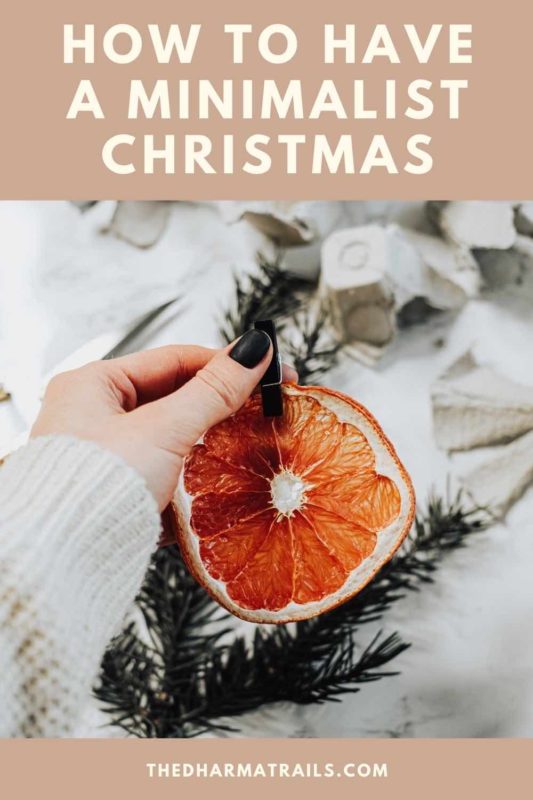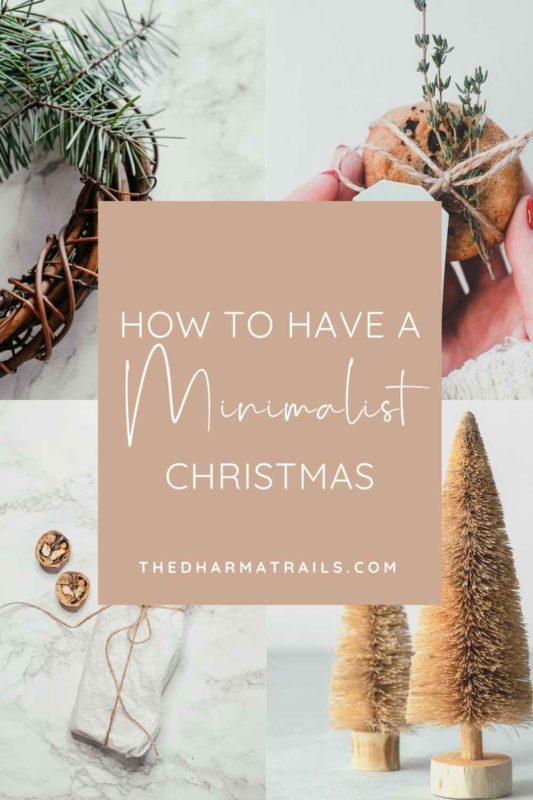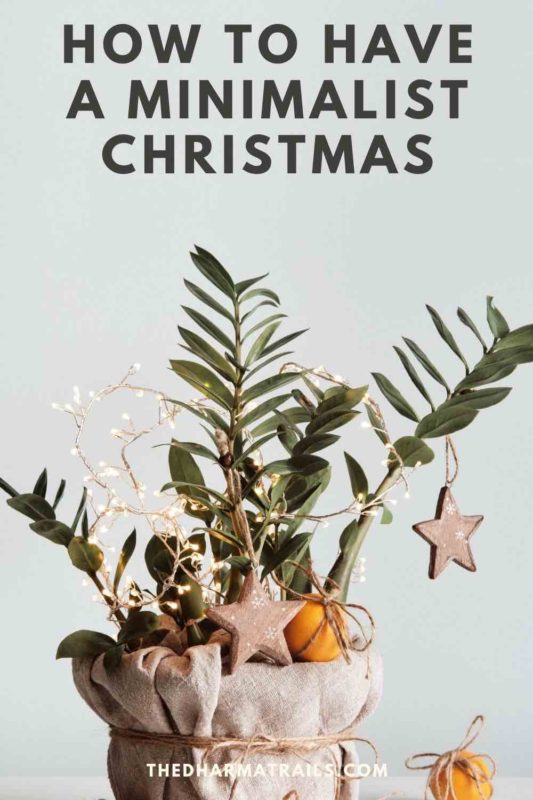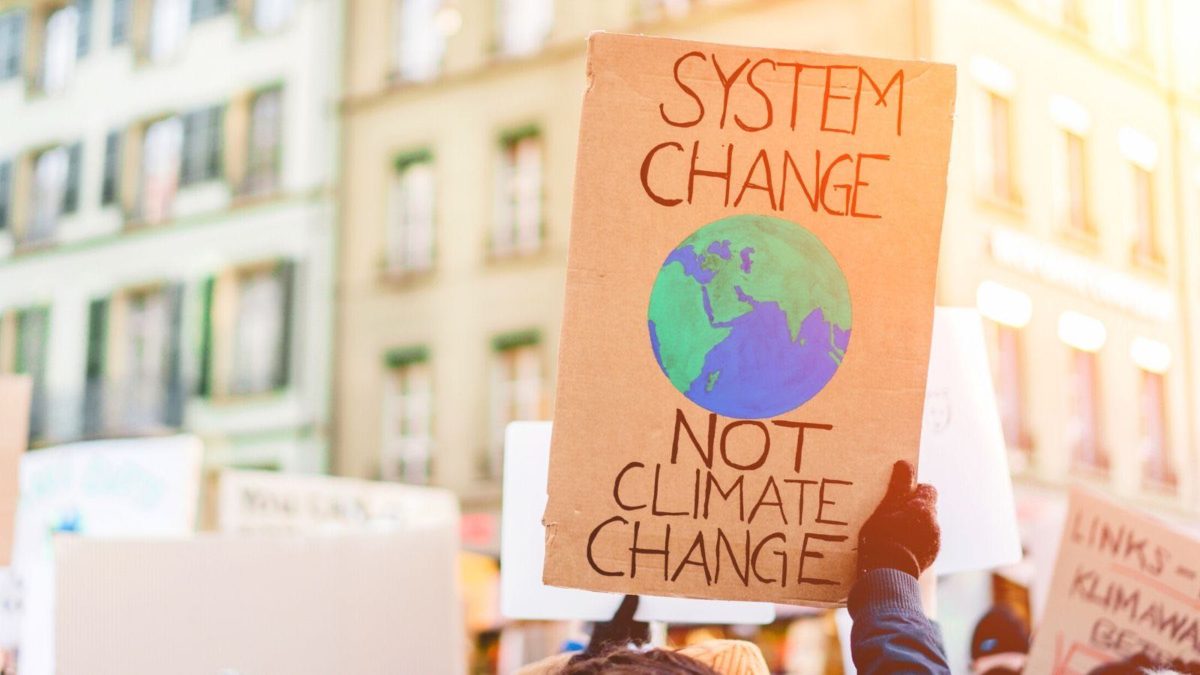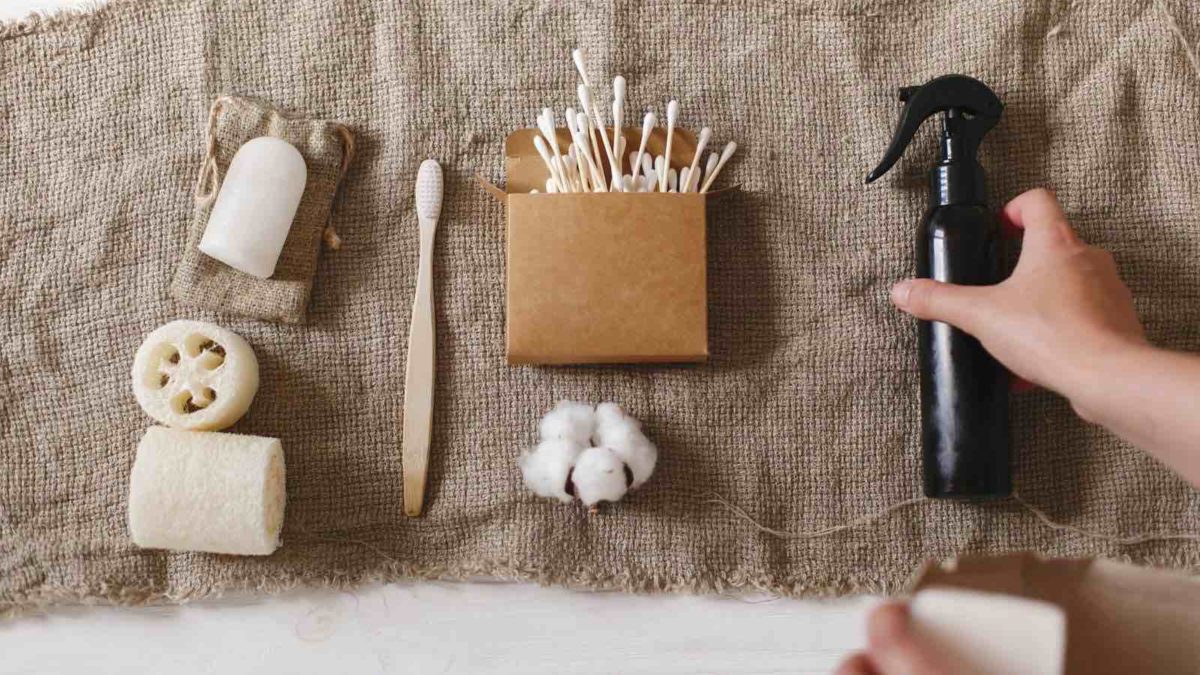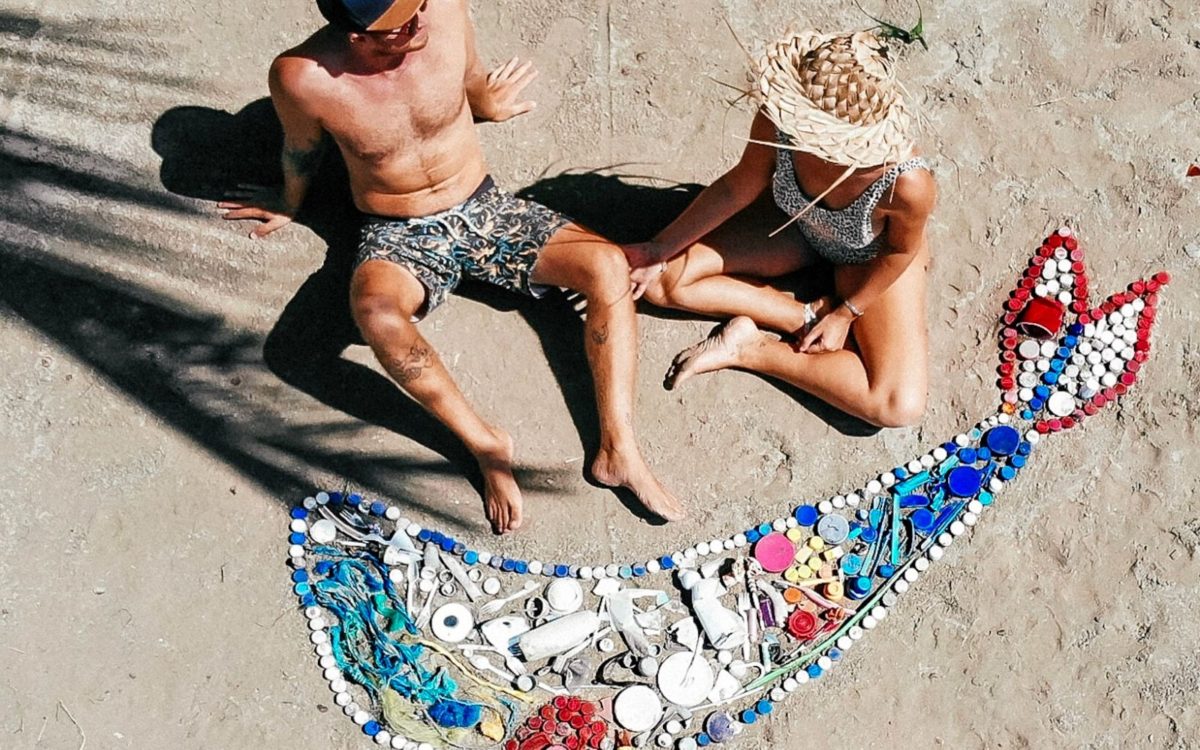Christmas is a time for “giving”. Well, that’s what we’re told. As a society driven by capitalism, we’ve taken to buying gifts. But gifts can be a burden (both financially and environmentally). A minimalist Christmas does not have to be “less”. In fact, it should be more.
This post may contain affiliate links, which means I may earn a commission if you click a link and make a purchase. As an Amazon Associate, I earn from qualifying purchases.
The idea behind the Minimalist Christmas is that you get more out of the day, week, month than ever before. And not just you. Those around you, the environment and those you’ve never met before.
This Minimalist Christmas Guide explains how and why you can have the best Christmas yet (with less).
Table of Contents
How to have a Minimalist Christmas
The best minimalist Christmas quote has to come from the one and only, Dr. Seuss. Which states:
“What if Christmas, he thought, doesn’t come from a store? What if Christmas, perhaps, means a little bit more?”
Dr Seuss – How the Grinch Stole Christmas!
It essentially pulls back the cover on the holiday as we know it. We’ve become so blindsided by stuff, sales, and advertising that we’ve forgotten the essence of the event.
Christmas is a day to celebrate the miracle of life on earth.
Does a Minimalist Christmas mean no gifts?
Gift giving is at the core of the event and a minimalist Christmas does not need to be any different.
The act of giving makes us feel good. It is essentially a “win-win” which is why it is so ingrained into human culture (all cultures).
The difference is in the gift itself. In fact, the gift doesn’t need to even be a physical item. In short, you can definitely enjoy the gift-giving experience during a minimalist Christmas celebration, we touch more on this below.
Minimalist Christmas means no decorations, celebrating, fun…?
Quite the opposite.
Getting festive is a great way to bring people together and cultures have been doing this since the beginning of time. We have also seen some beautiful festive displays for Christmas in Aspen Colorado, Grenada in the Caribbean, and in the Gold Coast Australia.
There are multiple ways to decorate and celebrate the spirit of Christmas without buying store-bought convenient items (plastic shaped Christmas Tree decorations, plastic-based wrapping paper, etc).
The whole idea behind a minimalist Christmas is not to miss out. The idea is to have a minimal negative impact.
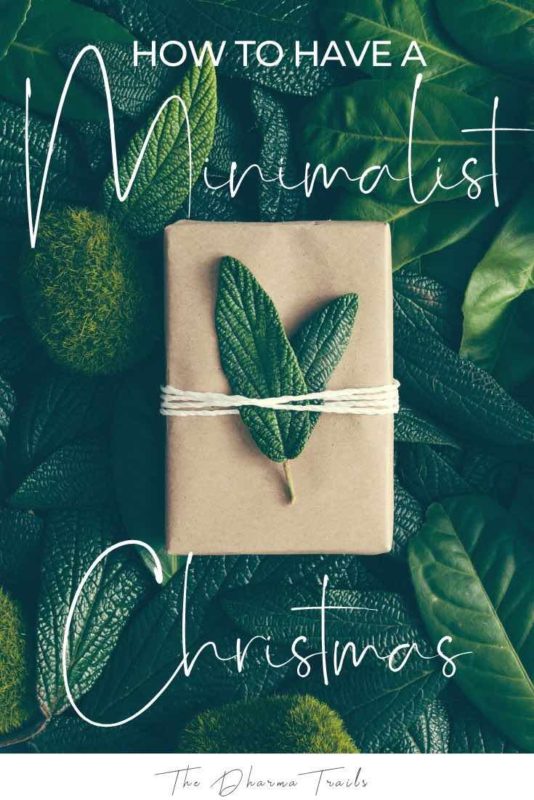
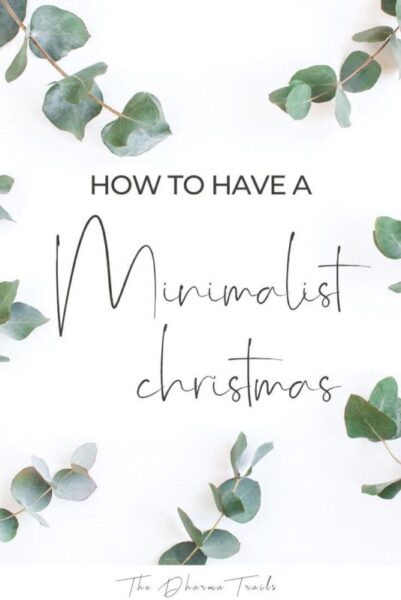
Minimalist Christmas: A Step By Step Guide
During the festive season and especially on Christmas Day there are a few key elements associated with modern tradition. These include:
- Gifts
- Food
- Decorations
- Christmas Tree
- Travel
The following Minimalist Christmas Guide explores these key Christmas ingredients and looks at ways in which you can make changes to reduce your negative impact (and in many cases, cause positive impact).
1. Gifts for Minimalists
What to buy a “minimalist” for Christmas. It is a question that many people are deeming an oxymoron. How can you count buying stuff as minimalism?
However, there are gifts out there that you can buy that do have a real positive impact. There are also gifts that you don’t have to buy that can have a positive impact.
Let’s explore both options:
Minimalist Christmas Presents
The best Christmas gifts are thoughtful gifts. Ones that have a true sense of meaning to someone’s life. That doesn’t mean that underwear can’t be thoughtful. If your loved ones need underwear, it can be a highly sought after and appreciated gift.
Here are some minimalist gift ideas for Christmas:
- Gift an experience or tour – Organize a picnic date for your loved one, or have a look at Airbnb experiences around you. With a full range of amazing experiences on there, you can tailor your present to someone’s needs or desires.
- Give a gift with purpose – What does the person actually need? There’s really no need to buy a gift for someone just because you feel you have to. It’s ok to ask, “What do you need this year” to avoid purchasing an item they won’t use.
- The Gift that gives again – Does your loved one have a cause or charity they support? Find out what they are passionate about and donate in their name.
- The DIY gift – if you have a creative edge, try making your loved one some natural soap, a candle, coasters, or some delicious goodies.
- Sustainable or Eco friendly Gifts – Can you encourage a more sustainable option for something that they already have? Items that can reduce someone’s overall environmental impact encourage are always appreciated. They may even change someone’s life for the better and encourage people around them to change!
If you are looking to an ethical online platform to purchase your Christmas gifts from, EarthHero is an online platform that sources sustainable and conscious products and ships them with the least amount of carbon impact possible.
Here are some sustainable gift pack ideas for your loved ones:
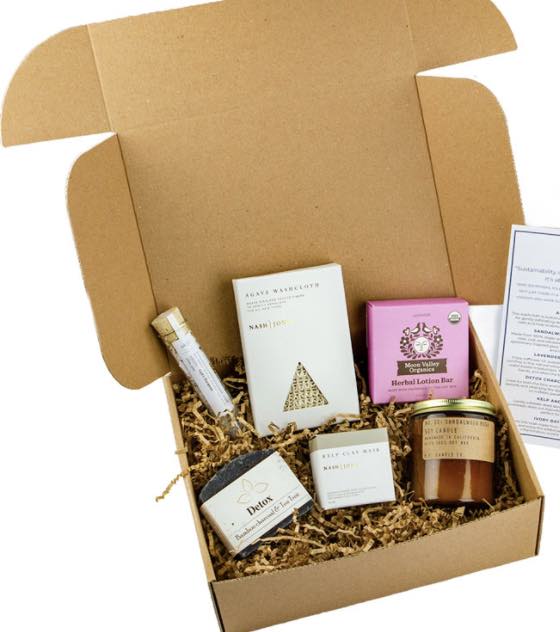
Self Care Kit
Want to treat your loved one to some relaxation. This self care gift box has all the necessary sustainable ingredients:
- Detox soap bar
- Organic Lotion bar
- Soy wax candle
- Bath salts
- Kelp clay mask
View on EarthHero
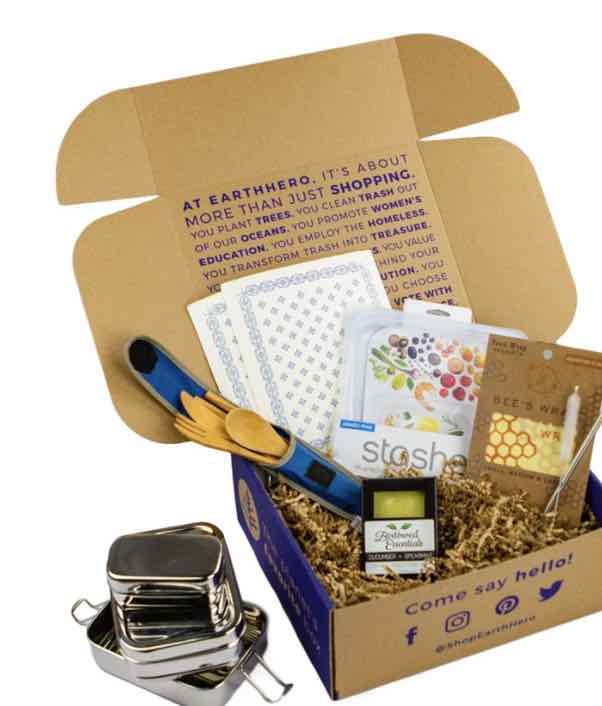
Eco Living Gift kit
The perfect gift for a starter sustainable journey. Filled with all the essentials to make their life a little greener:
- Bamboo cutlery
- Stasher bag
- Swedish dishcloths
- Stainless Steel Straw
- Organic Beeswax Wraps
- Stainless Steel Lunchbox
- Handmade green tea and eucalyptus soap
View on EarthHero
Smaller/Individual Items for Minimalists
If you don’t want to get a whole gift box, EarthHero has a whole array of sustainable gifts. Whether you’re looking for eco friendly gifts for him, kids, your extended family, or a colleague there are plenty of options.
Eco Friendly Gift wrapping
The infamous Christmas wrapping paper (colourful and shiny) is not a good environmental choice (especially for minimalists). The shine is actually a plastic lining which means that the “paper” is not really paper anymore and therefore is not recyclable.
There are some great eco friendly Christmas wrapping options out there. Here are a few to get you started:
- Used paper (newspaper, old wrapping, any kind of paper you have like old magazines, etc.)
- Used fabric – just clean it and cut it to make a nice wrap for you minimalist gift wrapping
- Old glass jars – these are a great option for storing and displaying small gifts
- Reusable bags – there is not much difference in taking a present out of a bag or a wrapped box. Reusable bags can be huge waste savers during the gift giving season!
2. A Minimalist Christmas Guide To Food
Food plays a major role during the Christmas season. Whether you celebrate on Christmas eve or Christmas morning, in many cases, it is the glue that ties everything together.
As popular as the turkey has become in mainstream US culture, it is not celebrated the same around the world. In many of the European countries, pork is the meat of choice, in Mexico and Asian countries, their traditional foods are severed.
Where did the turkey come from?
Like many Christmas traditions, there is a story behind the turkey. It is said that King Henry the 8th was the first king to start doing turkey on Christmas Day.
However, the tradition began as an economical solution in the villages of the UK in the 16th century. Turkey was a better option for farmers to eat over beef (cows produced milk) or chicken (chicken produced eggs).
But the turkey, well that was one animal they could spare. It also coincides with a “family” sized feast, backed on the idea that Christmas time was a time for getting together.
Eating meat. It’s not great for the environment.
Meat production (on its current scale) is having detrimental effects on our environment.
Taking the ethics of animal rights out of the equation, mass-produced meat is not good for our planet (or humans).
Much of the natural land being cleared around the world is done so to make room for the beef industry. And the poultry industry is under serious scrutiny for the number of chemicals and antibiotics they use (which end up back in our human bodies and in the waterways/environment).
In general, eating less or no meat is better for our environment, which means less negative impact, which means you are heading towards a minimalist lifestyle.
Palm oil products are a good one to avoid. There have been recent changes in the food industry to improve transparency. Here are some great Palm Oil Product alternatives.
What do minimalists eat at Christmas Time?
A minimalist Christmas should not be one without good food!
Taking the meat out of your meals does not mean that it is missing anything. There are some amazing vegan Christmas Recipes out there that you can serve on Christmas day. In fact, Jamie Oliver has a whole section on his website dedicated to Vegan Christmas Recipies (so you know they’ll be good).
Here are some ideas to incorporate into you Minimalist Christmas Feast:
- Roasted Nut Loaf
- Mushroom, Chestnut & Cranberry Tart (Vegan)
- Gravy (Vegan)
- Vegan Chocolate, Cherry & Honeycomb Parfait

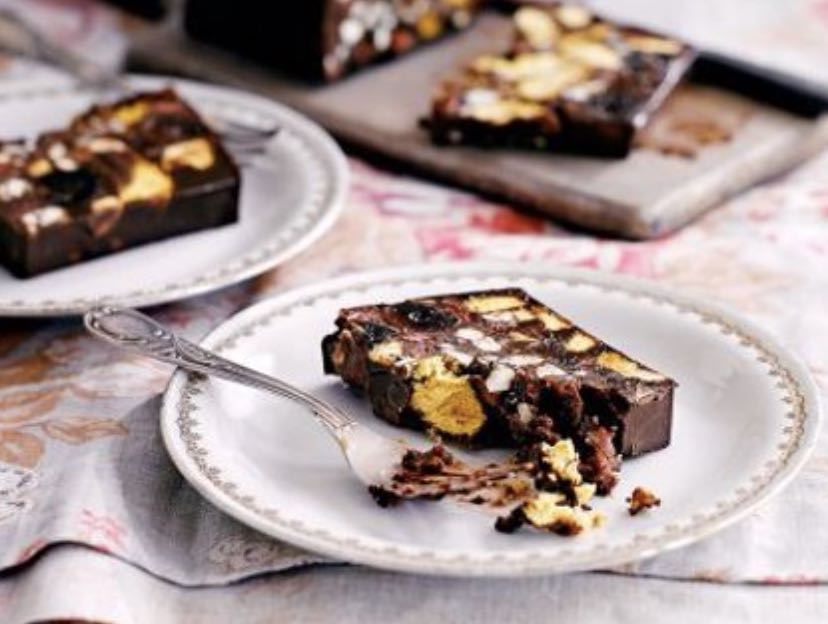

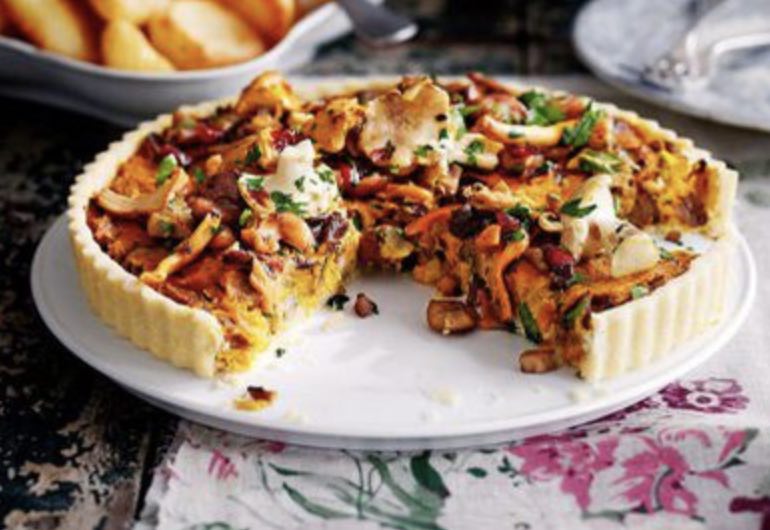
3. Minimalist Decorations for Christmas
Decorating your home or living space is part of the Christmas tradition. There’s something fun and exciting about seeing a place decorated and it really can change the mood of the holiday season.
There are so many off-the-shelf items that are bought in huge quantities every year and used once. This is where the issue is. It’s not that a minimalist Christmas has to go without festive home decor, it’s more that it should go without waste! At the very minimum reduce waste as much as possible.
Decorate your living space – The Minimalist Christmas Guide
Everyone has a different style, taste and living arrangements. So there is no one size fits all for decorating your space, however, there are a few certain things to consider when planning your decorations in order to reduce your negative impact.
- Use what you already have – there is no need to go out and purchase new “minimalist” decorations, simply use or adjust what you have. The ability to reuse our goods over and over is a huge factor in having a less negative impact.
- Adjust what you already have – personally, I don’t like shiny tinsel at Christmas time. But many do. One issue is that it can easily break up during the season and leave tiny bits of plastic floating around which can end up blown outside and get into the environment. Try putting old tinsel inside used glass jars. It will contain the decoration and stop it from deteriorating (but you can still see the shine).
- If you are starting from scratch get something reusable – Christmas lights really set the mood. But Christmas lights can be very “Christmasy”. Something like Solar Powered Fairy Lights can be used for any occasion (not necessarily “Christmas colour or style” (they are also solar-powered which is awesome!)
- DIY Decorations – there’s a lot of great ways that you can get creative at home during the Christmas season (without purchasing new Christmas decorations). Think “low negative impact”. Items like old pieces of string, fabric, and jars make great bases to work from. Make them festive with some cuttings of a pine tree or pine cones (if you’re somewhere cold). Otherwise, use water cuttings you can find. Make them personalised with some Vegan (Plant Based) Paint
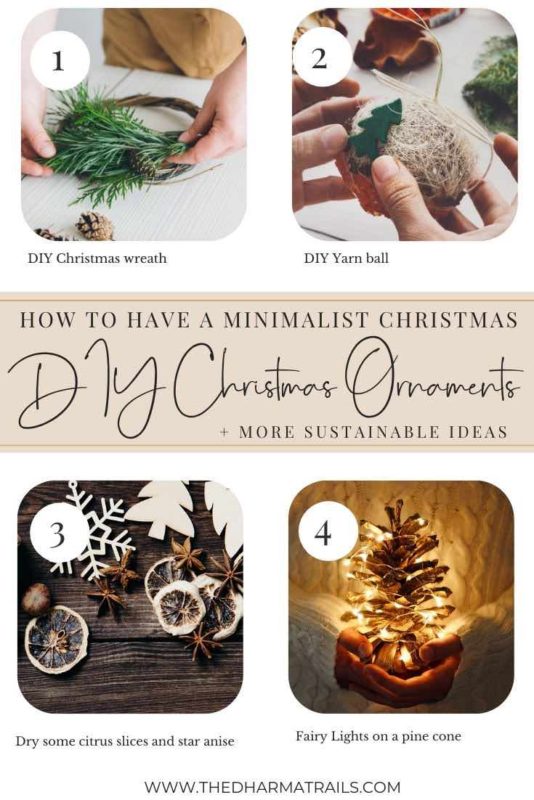
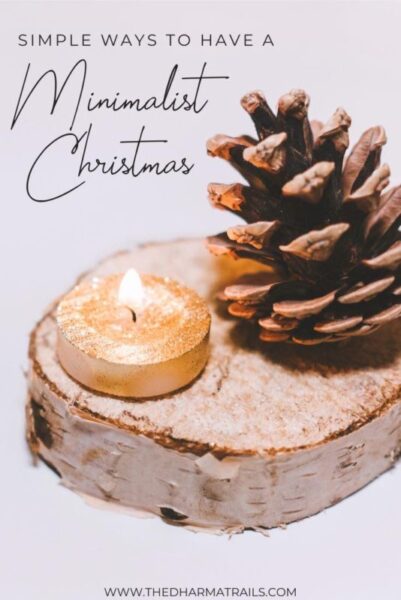
4. How to decorate a minimalist Christmas tree
The same principle applies to decorate a minimalist Christmas tree. If you already have Christmas decor, use them or adjust them to better suit your style. There are some unique ways to create a zero waste or minimalist Christmas tree.
- Save your used wine corks to make a small ornamental Christmas tree
- Make a wooden triangle frame, and string ornaments across it
- Collect different sized foliage branches and hang on your wall
- Go to the beach and collect some driftwood of various sizes and hang on the wall with dried orange as ornaments
Minimalist Christmas decorations should be about buying less.
- What decorations have you already got from last year that you can reuse and adapt?
- If you do need to buy something, what’s something that can have multiple uses for all/lot’s of occasions
- Can you make something yourself?
Any that you don’t want anymore you can donate your old decorations to someone in need!
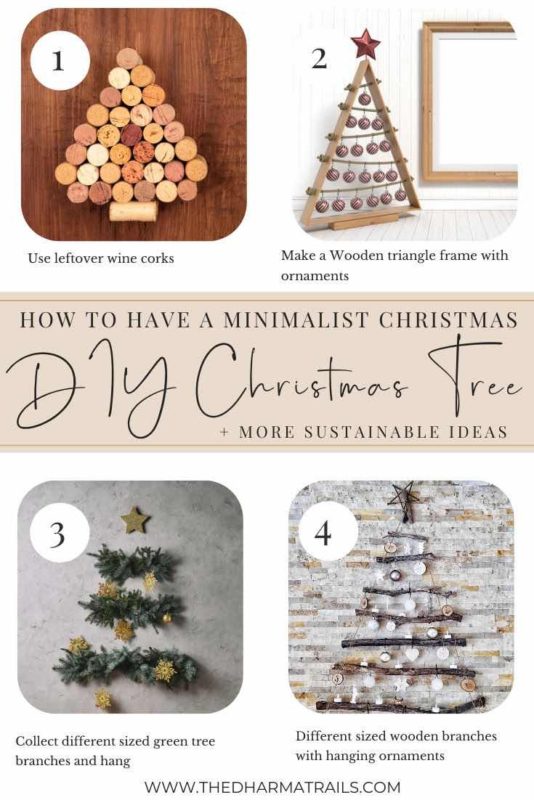
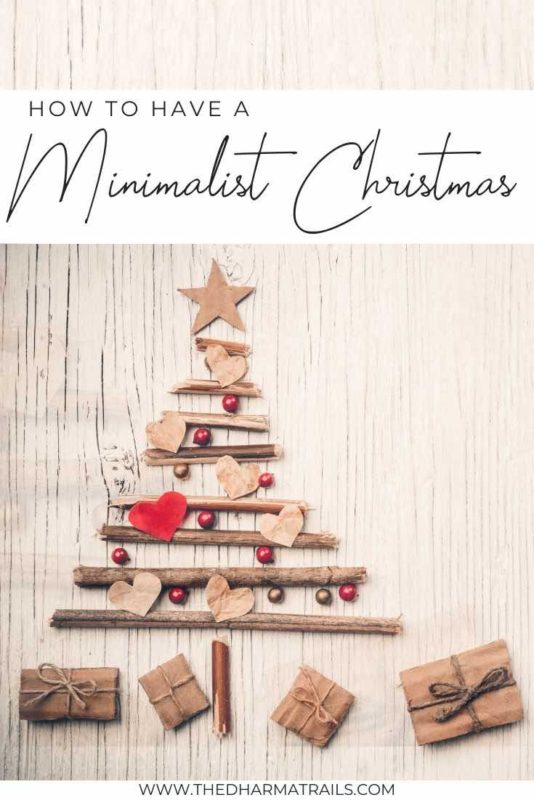
5. Travelling for Christmas? Try Eco Travel.
Planning on travelling this Christmas season? There are normally a few ways that travel increases during the Christmas season:
- Families/friends travel from around the country/world to get together and meet up
- People take their “holiday vacation”.
In 2018 it was estimated that 41 million passengers traveled through airport security screening checkpoints nationwide (In the USA during the holiday season). The volume of travellers spikes during this time (not only in the USA, but around the world).
Christmas is a time for getting together, it is also many peoples only real time off for the year, so the need to “get out” is strong. Travel and exploration is part of the human spirit. And while over-tourism is having increasingly negative impacts on the world, there are ways in which we can travel better.
Eco travel is growing in popularity, and for good reason. Whether you are traveling nationally or internationally, there are ways in which you can physically travel with a lower impact. These include things like:
- Travel on public transport when available (trains, buses)
- Flying the most direct route possible (avoid multiple layovers when flying – it uses less fuel per flight).
- Stay in eco resorts or other eco accommodation. These kinds of places can significantly reduce your environmental impact while on vacation.
- Do not support unethical animal tourism when traveling (or at home) – you should support good animal sanctuaries.
- Have the right eco travel gear (and use it). Traveling has a huge waste footprint. It all comes down to the mass volume of seemingly mundane things like plastic cups on planes. Every flight goes through hundreds that end up in a landfill. Simply having your own reusable cup on a plane is a great, green step.
Here are some examples of eco airbnbs around the world:
Why we give presents at Christmas?
Christmas has become synonymous with decorated trees, large quantities of food, colourful packages and a big guy in a red suit. But it’s humble beginnings were very different.
Christmas is a religious day. And for many non-practicing Christians (or non-Christians) the message has been lost in capitalist translation. It’s said that the reason for gift giving at Christmas comes from The Three Wise Men, who delivered Frankincense, Gold, and Myrrh to the baby Jesus.
These are very symbolic items (as most religious stories are based on symbology).
Jesus to Santa – How did that happen?
The act of giving gifts is symbolic of the birth of Jesus. So how did this translate to the jolly red holiday we have today?
The character “Santa Clause” stems from the stories of St. Nicholas.
- St. Nicholas was a wealthy bishop living in Turkey during the fourth century
- It was said that he was generous with his wealth and would give gifts of gold to those who needed it (currency before money as we know it was invented)
- The story is that he dropped some gold down chimney of a family with three daughters. The family was too poor to offer a paid exchange for marriage (typical of the time)
- A stoking was hanging by the fire to dry and the gold fell into the stocking
- A legend was born
- Stories of other people receiving gifts in secret tied back to Bishop Nicholas
- The bishop was made a saint due to his generosity though was later exiled from the country and sent to live out his years in prison
- Dutch settlers into the United Staes during pilgrim days told stories of the famous European ‘Sinterklaas’ which became Santa Claus
So, Santa Claus really doesn’t have anything to do with Jesus, except for the link that Nicholas was part of the Christian church. Therefore the present giving as we know it is really symbolic of helloing those in need rather than celebrating the day.
What does minimalist mean?
Minimalism is a hot topic and buzz word. But what does it really mean?
As we live in such a capitalist-driven world, the word minimalism has been strongly tied to “stuff”.
In fact, there is no real definition of minimalism as a lifestyle.
Minimalism in art
The term minimalism in the art world has been around since the 1960’s. Artists like Frank Stella, Yves Klein and Donal Judd (among many others) experimented with simplified shapes and colour pallets, objects and movement. The art was simplified compared to Renaissance oil paintings, yes. But was it lacking anything?
Art is subjective. Many people have formed found connections with the simplicity of lines and colours. So too, is the simplicity of lifestyle.
“Sometimes less is more”
This phrase is often associated with the architect and furniture designer Ludwig Mies Van Der Rohe (1886-1969), one of the founders of modern architecture and a proponent of the simplicity of style.
There’s no right or wrong answer when it comes to minimalism, art or lifestyle.
There are, however, repercussions.
- Art – a piece of art may be offensive to some
- Lifestyle – a certain lifestyle may negatively or positively impact those nearby
Minimalism may not be for everyone. But it is proving to have a much less negative impact on our world and the environment.
Is there Minimalist Christmas Music?
Music is a part of human culture and goes hand in hand with festive times of rejoicing. There seems to be a lot of Christmas Mix CD’s still in circulation. Especially at Christmas time, these are often put in sales bins as “stocking fillers”.
The concept of a present “filler” doesn’t really tie in with a minimalist Christmas.
Instead of buying new Christmas music (physical CD’s) this year, try getting a subscription to an online music platform like:
Or you can stream free online Christmas Radio Stations.
Minimalist Christmas: What does it really mean?
While this post covers a lot of facts and backstory, there are a few key points to takeaway.
- There is no real definition of a “minimalist Christmas” or lifestyle. It is really about reducing your negative impact (on yourself, the people around you, and the environment).
- The tradition of gift-giving was sparked by helping those in need. If you are going to give gifts this season, make sure that it is something that somebody actually needs (avoid wasteful gifts that will never be used)
- Gifts don’t need to be physical items. Giving the gift of your time (either by organizing as a personalized experience or offering to teach something can be invaluable).
- Minimalism isn’t about missing out. If you want to decorate your living space to enjoy the season, then do it. But do so in a way that reduces the need to buy single-use or plastic items.
- Eat consciously this year. Replacing the “traditional” meat-based meals with plant-based is a great way to reduce your environmental impact.
- Travelling this season? Try eco travel. There is inevitable some form of travel during the holiday season. If you are going to do so, try an eco travel approach (reduce your impact around the world and encourage others to do the same!)
Whether it’s November or December, it can also be a great time to looking at ways you can take climate action in the new year. Here are 6 sustainable new years goals.
Have a Merry Minimal Christmas!
